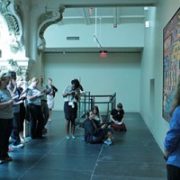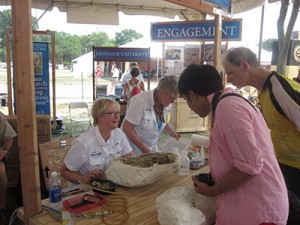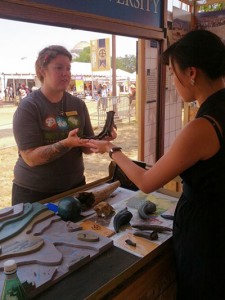Kudos Affiliates! July-August 2012
As summer heats up, so too do Affiliate accomplishments!
The Michigan State University Museum (East Lansing, Michigan) received a new grant from the Asian Cultural Council, New York City, to establish a partnership between the Michigan State University Museum and Yunnan Nationalities Museum, in Kunming, China. The $12,000 grant is aimed at creating new resources online that can be used to access Chinese folklife and ethnographic collections by scholars, museums and the public.
The National Underground Railroad Freedom Center (Cincinnati, Ohio) will receive a $1.8 million grant over three years as part of the W.K. Kellogg Foundation’s America Healing program. The three-year grant will be used for programs to increase student and public awareness and understanding about the history of racial oppression in this country.
The Long Island Museum (Stony Brook, New York) has received a grant of $286,000 from the National Endowment for the Humanities. The highly competitive grant, awarded to only a few museums nationwide, will complete the revitalization of the Carriage Museum with two new exhibition galleries.
The GAR Foundation has awarded a $30,000 grant to the Western Reserve Historical Society (Cleveland, Ohio), for educational programming at Hale Farm & Village.
Three Affiliates received Smithsonian Community Grants program sponsored by MetLife Foundation as part of the Smithsonian Institution Traveling Exhibitions Services (SITES):
- Institute of Texan Cultures (San Antonio, Texas) received $5,000 to fund programming that fosters self-identification and pride for dual heritage African-Native Texans. The grant will support honoraria for several scholars, craft and educational materials, and the marketing and advertising of events related to the themes of IndiVisible: African-Native American Lives in the Americas.
- San Diego Museum of Man (San Diego, California) was awarded $3,750 to fund the honoraria of Native American skate industry professionals who will participate in a panel discussion. The grant will also support the marketing of programming related to the themes of Ramp it Up: Skateboard Culture in Native America.
- Evergreen Aviation & Space Museum (McMinnville, Oregon) will receive $2,160 to fund the busing of economically disadvantaged and minority youth in the regional Portland area to view Black Wings: An American Dream of Flight.
A technology upgrade for Ellen Noel Art Museum (Odessa, Texas) is the result of a Permian Basin Area Foundation $5,000 grant. This technology upgrade will help support the museum’s existing website and social media sites.
American Association for State and Local History (AASLH) announced the winners of their 2012 Leadership in History Awards Winners including the following Affiliates:
- Arizona State Museum (Tucson, Arizona) for the exhibit Many Mexicos: Vistas de la Frontera
- Conner Prairie Interactive History Park (Fishers, Indiana) for the exhibit 1863 Civil War Journey: Raid on Indiana.
- Montana Historical Society (Bozeman, Montana) and Montana Office of Public Instruction Indian Education for All Divisions for Best Practices in Museum Education: Museums and Schools as Co-Educators.
- North Carolina Museum of History (Raleigh, North Carolina) for the exhibit The Story of North Carolina.
- Ohio Historical Society (Columbus, Ohio) for the exhibit Controversy: Pieces You Don’t Normally See; for the Ohio as America Online 4th Grade Textbook; and for the Ohio History Service Corps-AmeriCorps Program.














